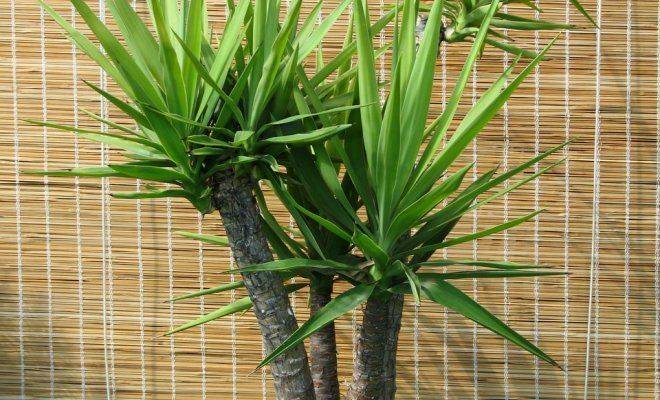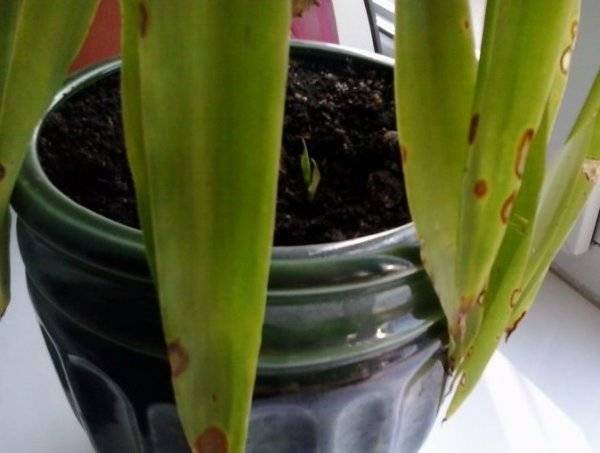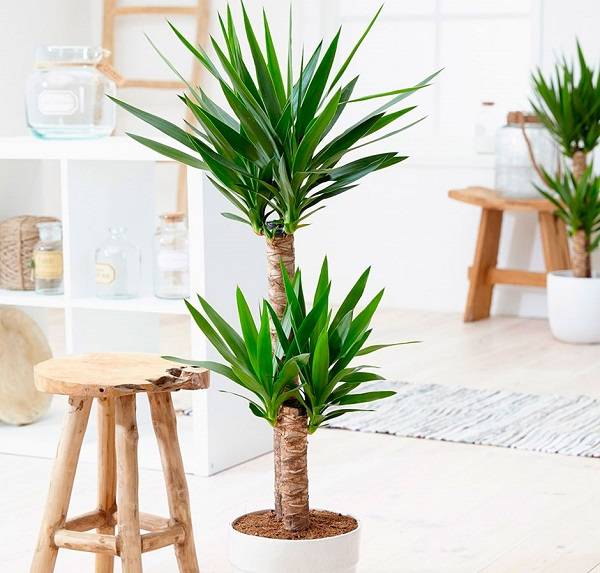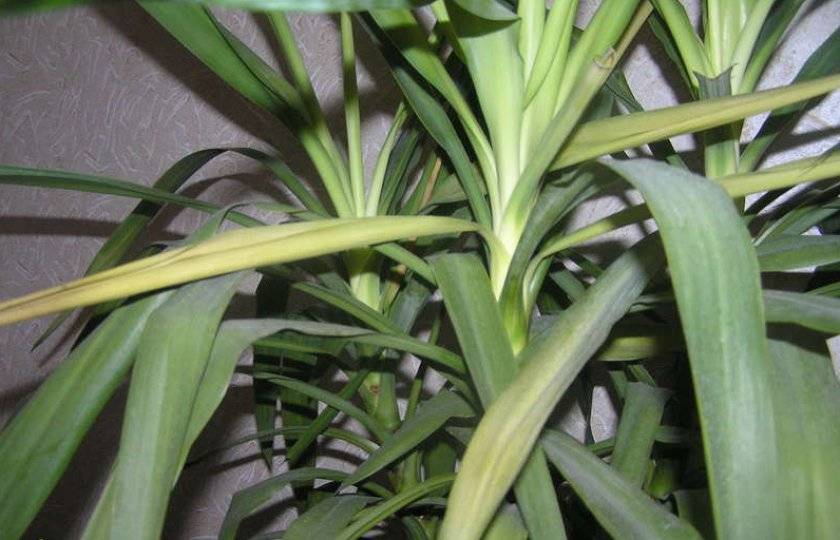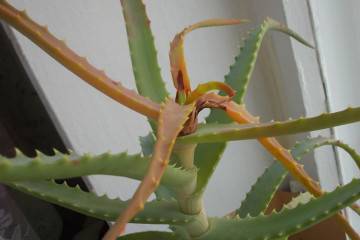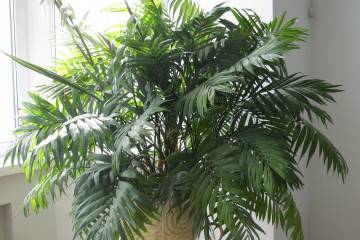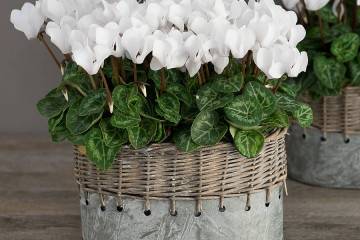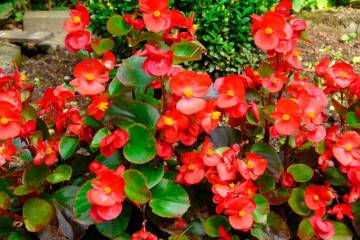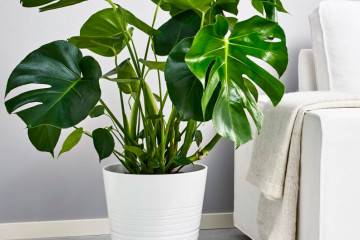Yucca - leaves turn yellow and dry, what to do
Content:
The beautiful yucca is a decoration of large halls and rooms. This exotic false palm does not lose its decorative effect all year round. Her garden sisters also bloom all summer. She is very easy to care for and is increasingly appearing in ordinary apartments. Perhaps the only problem that may arise for the owners of the yucca palm is that the leaves turn yellow and dry. What to do with this and how to help the palm tree is the topic of this article.
Yucca leaves dry and turn yellow: what could be the reasons
The surest reason for this behavior of a plant is improper care or its violation.
With changes in temperature, lighting, humidity, watering regime, protests will be expressed by yellowing and dryness of the foliage. Also, stressful situations affect Yukka's health - moving, changing place in the apartment, a sharp temperature drop, drafts.
Yucca: leaves turn yellow and dry, what to do
You can save a homemade yucca in 8 cases out of 10. The main thing is to pay attention to the yellow signs of a palm tree in time, and then find the true reason, make the care correct and carry out urgent rehabilitation.
Diseases
Yucca is rarely attacked by disease. Often the cause of ailments is frequent watering or overflow of a flower. Diseases that can be identified by changes in foliage:
- brown spot. The lower leaves are first covered with light spots, starting from the edges, then the entire leaf plate is painted yellow, and then dark brown;
- leaf necrosis. Such a disease can be detected by small spots on the edges of the leaf plates. The stains may be damp or dry.
Fungicides are used as a treatment.
Pests
Insects parasitize on damaged flowers, the care of which is not complete. On a sick yucca you can find:
- ticks;
- shield;
- aphids;
- caterpillars;
- thrips.
Damage by pests for a long time is accompanied by yellowing and death of foliage. You can fight parasites with insecticides.
Soil moisture
In relation to soil moisture, yucca is similar to succulents. This plant accumulates moisture in its trunk, and dense leaves practically do not evaporate moisture from the greenery.
Yellowing of the lower leaves is one of the signals of an incorrect watering regime. Soon the leaves will begin to dry out, and this is already a serious signal. Timely transplanting a flower will save its root system.
Watering should be rare and only after the soil has completely dried out. In winter, watering is reduced to 1 time in 3-4 weeks. There should be not a lot of water, and the excess should be immediately removed from the pallet.
Air temperature
Yes, yucca is a resident of the hot USA and Mexico. But its comfortable temperature of existence is 20-25 ° С in summer. In winter, the flower sleeps, and it is better if during this period the temperature is reduced to 15 ° C.
Why do yucca leaves turn yellow in winter? Everything is simple here, if the pot is near the battery, then the palm is hot, and even the air is dry.
If the plant fails to arrange the winter period, another question arises for flower growers: why do the tips of the leaves dry on the yucca. This is due to the dryness of the air. Infrequent spraying from a spray bottle is required.
Decay of roots
Root decay is accompanied by a sharp yellowing and foliage shedding. The leaves begin to turn yellow and fall off, starting from the lower ones. This process can occur due to multiple maintenance gaps.
- Regular overflow of the flower. If a lot of excess water flows from the pot into the pan, the soil at the bottom of the pot is constantly moist. This excess moisture provokes rot of young roots.
- Frequent watering. If the soil does not completely dry out between waterings, the roots suffer from an excess of moisture. Watering is especially often disrupted in winter, when the temperature drops, and watering does not decrease.
- Heavy watering also causes rot, even if not too much water flows into the sump. With abundant watering, rot can immediately go to the trunk when water collects at its base.
- Lack of drainage. The holes in the bottom of the pot should be large so that air can flow there as well. The drainage layer is made of lightweight expanded clay or broken shards. The minimum drainage layer is 5 cm, it will protect against moisture accumulation.
If the yucca stopped growing and abruptly began to shed yellowed leaves, it urgently needs to be rescued. As long as the rot has not climbed up the trunk, the plant can be saved in its entirety. An urgent transplant into a new soil and restoration of the required conditions of detention is what a room palm tree needs.
Other possible problems
What other reasons could there be and what to do if the leaves of the yucca palm turn yellow and dry? These problems can be of different nature.
Natural leaf discharge
From time to time, the lower leaves of the palm tree turn yellow and dry. This is a sign of growing up and growing. A palm tree does not know how to shed dry leaves on its own. In order not to spoil its appearance, you need to pull the dry sheet down and carefully remove it from the trunk.
Lack of light
Yucca can grow in shade, but loves when there is enough light. In late autumn, when daylight is shrinking, the exotic beauty suffers. It is necessary to organize artificial lighting for the plant so that its daylight hours are at least 10 hours.
Stress
After the purchase of the plant, yellowing and drying of the greenery may be observed. This is a reaction to a sharp change in conditions of detention, environment, lighting. You should not rush to replant the palm tree in new soil. 10-14 days of adaptation will help the plant recover.
Permutation
Yucca is a couch potato, and her frequent rearrangement from place to place can also affect her decorative effect. The leaf can wither, turn yellow and dry out. During such periods, flowers are especially weak against pests and diseases.
Lack of a dormant period
Most often, yucca begins to turn yellow precisely because of improper wintering. Conditions that spoil the appearance of a palm tree:
- heat;
- dry air;
- lack of light.
The ideal rest period for a yucca is:
- air temperature 15 ° С;
- moderate air humidity;
- rare watering;
- adequate lighting;
- daylight hours more than 10 hours.
Correctly organized wintering ensures the preservation of decorativeness. And in the spring, after waking up, the palm tree is actively growing green.
Rough soil change
The exotic root system is not too developed and very delicate.If the old soil is vigorously shaken out, the roots are easily damaged. After the transplant procedure, the palm tree grows and restores roots for a long time, therefore it stops growing and can even drop the lower rows of leaves.
A conventional palm transplant looks like a transshipment. It is this procedure that will save the root system. And after the transplant, she will quickly restore her growth. Yellowing of a pair of leaves after transplanting is considered normal.
Yucca is a wonderful representative of the Agavov family. It is a worthy decoration for any home, office or hall. The plant is not capricious, and its care requirements are easy to recreate in an ordinary apartment.
